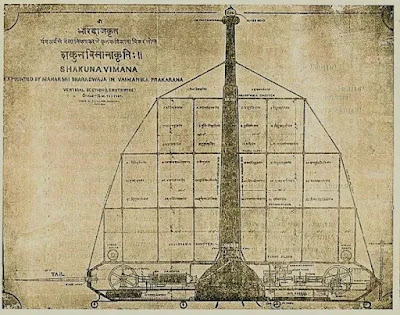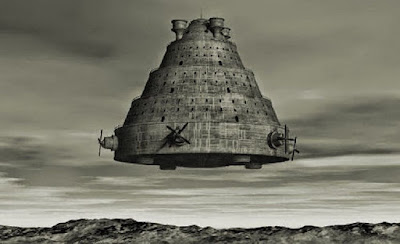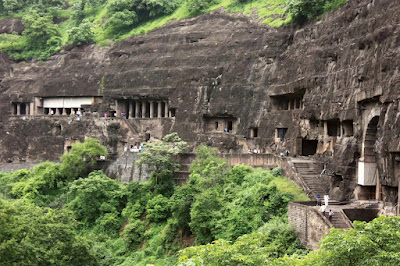 |
| Credit: @Arian Zwegers |
Kailasa Temple is a magnificent piece of ancient Indian architecture located in the state of Maharashtra, India. Built by Hindu craftsmen to honor Lord Shiva, the temple is the largest monolithic piece of art in the world. It was created to mimic Shiva’s home on Mount Kailash in the Himalayas.
According to legend, a Hindu king ordered the temple built after he prayed to Lord Shiva to save his wife from sickness. Architects started carving the structure from the top of the mountain and worked their way down, removing more than 200,000 tons of volcanic rock between 757 and 783 A.D. The carving process took over two decades to complete.
The temple carved from single rock and has a U-shape and is approximately 150 feet deep. The structure is three stories tall and is adorned with large stone carvings of various Hindu deities along the outer walls. Two internal flagstaff pillars depict stories from Lord Shiva’s saga, and there are enormous carvings honoring Lord Vishnu, another main Hindu deity.
 |
| Credit: @Arian Zwegers |
Almost every inch of the interior structure contains intricate carvings. On the top, there are carvings of elephants that point the way down. On the bottom of the main building, an army of huge stone elephants appears to be holding up the entire temple. These elephants surround a 100-foot-tall pillar that serves as the main edifice in the temple complex.
Kailasa Temple covers more square footage than the Parthenon in Athens. The temple is mostly made of black volcanic rock, and it was originally covered in white plaster to give the illusion of snow. Visitors can still see remnants of the white plaster today.
Archaeologists estimate that there are more than 30 million Sanskrit carvings within Kailasa Temple that have yet to be translated. If experts can find a way to unlock the hidden meaning of the language, it would make Kailasa Temple one of the most valuable historical artefacts on Earth.
Despite the temple’s magnificence, there is some controversy surrounding its construction. Some people argue that the Kailasa Temple is much older than believed because there is no way humans in that time period could have excavated such a huge structure. The surrounding caves have carvings that are much older than Kailasa Temple, but this could simply mean that no one got around to carving Kailasa until much later.
There are also some theories that ancient aliens may have played a role in the temple’s construction, but that's a whole different story! Regardless of its history, Kailasa Temple is a monument to Lord Shiva, and there are five shrines inside the temple that pay homage to the greatest of Hindu gods. The temple is a marvel to behold and is truly a unique and priceless piece of ancient architecture.
The Kailasa Temple is a remarkable ancient masterpiece that stands as a testament to the ingenuity and skill of ancient Indian craftsmen. Carved from a single rock, the temple has survived for over a millennium and remains a popular destination for visitors from around the world. Its intricate carvings and sculptures, depicting various Hindu deities and mythological stories, are a sight to behold. Despite the controversy surrounding its construction and the mysteries that still surround it, the Kailasa Temple remains an awe-inspiring feat of human engineering and artistic achievement. It serves as a reminder of the rich cultural heritage and legacy of India, and its enduring spiritual significance to millions of people around the world.
Articles you might like:







